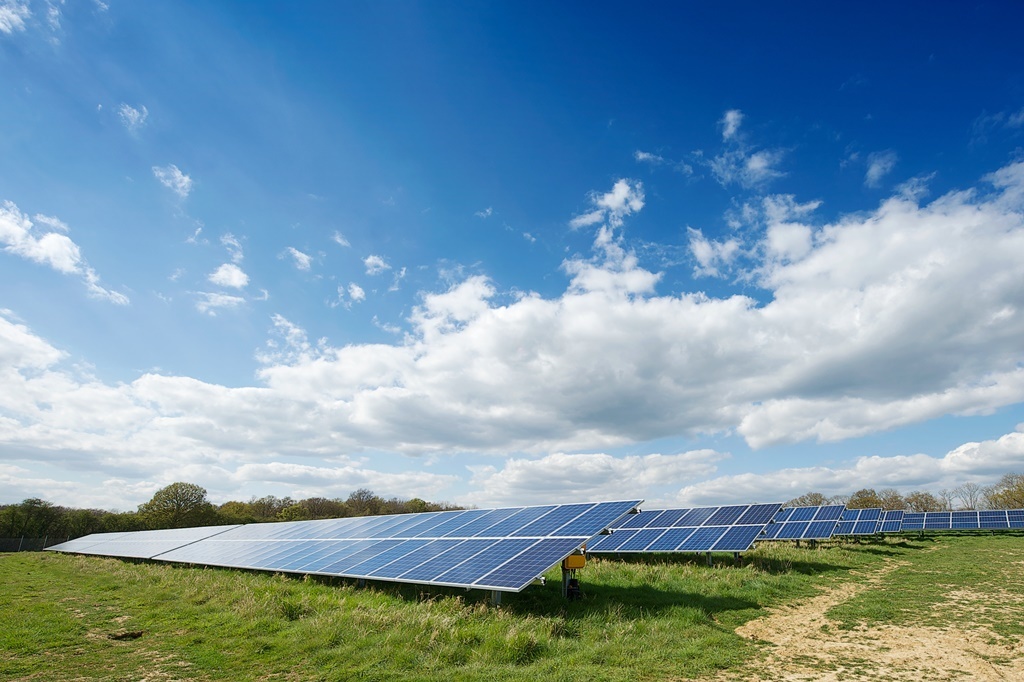
Renewable energy will draw almost two-thirds of the spending on new power plants over the next 25 years, dwarfing spending on fossil fuels, as plunging costs make solar the first choice for consumers and the poorest nations.
Solar power will draw $3.7 trillion in investment through 2040, with a total of $8 trillion going toward clean energy. That’s almost double the $4.1 trillion that will be spent on coal, natural gas and nuclear plants, according to a forecast from Bloomberg New Energy Finance.
The figures show the traditional dominance of coal and natural gas suppliers will slip in the coming years as cheaper renewables mean developing nations can tap less-polluting sources to meet their swelling energy needs. The forecast from New Energy Finance also indicates that coal will remain an important fuel, suggesting policy makers must take further steps to control greenhouse gases.
“We will see tremendous progress toward a decarbonized power system,” Michael Liebreich, founder of New Energy Finance, said Tuesday in a statement as the research group released its findings in London. Despite this, emissions will continue to rise “for another decade-and-a-half unless radical policy action is taken.”
Rising Emissions
Greenhouse gas emissions will increase until 2029. That’s almost a decade past the date the International Energy Agency has set as target that would lead to capping the global increase in temperatures at 2 degrees Celsius (3.6 degrees Fahrenheit) by 2100.
Developing nations will account for 79 percent of 8.9 terawatts of new power capacity added worldwide, according to New Energy Finance, with solar reaping the biggest gains.
Most of the solar projects in these regions will be large- scale power plants, with about 1.5 terawatts installed by 2040, compared with about 800 gigawatts of small-scale and rooftop systems.
That pattern will be reversed in developed countries, with 271 gigawatts of large solar farms compared to almost 900 gigawatts of smaller power systems, according to New Energy Finance.
Worldwide, rooftop and small-scale solar plants will jump nearly 17-fold from 104 gigawatts last year to nearly 1.8 terawatts in 2040.
With prices for solar panels expected to plunge 47 percent, the industry is going to flourish because of basic economics instead of government subsidies, said Jenny Chase, chief solar analyst at New Energy Finance.
‘Solar is Cheap’
Because sunshine is free, the cost advantage over fossil fuels will continue to increase. “Solar is cheap and it’s only going to get cheaper,” she said in an interview.
Coal will attract $1.6 trillion of investment, gas will draw $1.2 trillion and nuclear will bring in $1.3 trillion in investment over the next 25 years. Developers will spend $2.4 trillion on wind farms.
That spending will bring new opportunities for the world’s energy poor. More people will gain access to electricity through systems that combine solar panels and battery storage than from earlier efforts to build new power grids in regions that lack electrical infrastructure, said Jigar Shah, a clean-energy financier and the founder and former chief executive officer of SunEdison Inc., the best-performing solar company.
“That’s the exciting piece of this: the empowerment,” Shah said in an interview.
Delivering “power to the people” through small systems will help reduce the historic connection between economic development and higher pollution levels, according to New Energy Finance.
“Up to now, small-scale solar investment has been dominated by wealthy countries such as Germany, the U.S. and Japan,” Chase said. “By 2040, developing economies will have spent $1 trillion on small photovoltaic systems, in many cases bringing electricity for the first time to remote villages.”
To contact Bloomberg News staff for this story: Ehren Goossens in New York at
